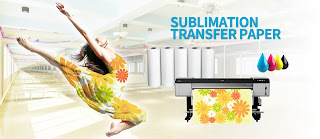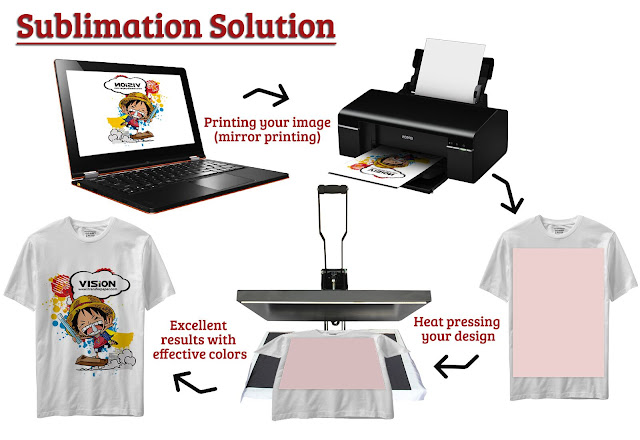the knowledge about sublimation printing
The desire to create garments and other artifacts that reflect the beauty of the world around us and provide for the expression of our artistic nature has been evident from early in human history. The decoration of the body presumably predates the production of clothing. Textile printing is the most versatile and important of the methods used for introducing color and design to textile fabrics.Considered analytically, it is a process of bringing together a design idea, one or more colorants, and a textile substrate (usually a fabric), using a technique for applying the colorants with some precision.Several techniques have been used and the colorants available have multiplied, the latest and the most popular is sublimation print.
We have learnt that in Chemistry that an element or compound normally has three states viz. solid, liquid and gaseous state and conversion from one state to another can happen by applying heat(solid>>liquid>>gaseous) or by removing heat(gaseous>>liquid>>solid). However, there are certain elements where only two states exist viz.solid and gaseous. Thus in these elements, when heat is applied, an element gets transformed into gaseous form without intermediary liquid form(solid>>gaseous). This process of transformation is called "sublimation.” Dye sublimation printing uses above property to transfer any image/artwork from one surface to another. Popular uses are to transfer images on T-shirts. A dye which sublimates under pressure and heat is mixed with the inks.
Dye: To impregnate color into a material.Many times this color change is permanent.
Sublimation: A change directly from the solid to the gaseous state without becoming liquid.
Polymer: Consisting of large molecules made up of a linked series of repeated simple molecules.
Dye sublimation: Solid dye particles are changed into gas using heat and pressure, then bond with any polymers present, and change back into a solid.
Printing process
In this printing technology, the print heads get heated up while passing through the film; this forces the solid dyes to get vaporized and diffused on the glossy surface of the printing media, which in turn creates a gentle gradation for each pixel at their edges.
The ribbon consists of three colored panels (cyan,magenta, and yellow) and one empty panel to hold the lamination material that is used as over-coating.
The whole printing cycle is repeated for four times where the first three cycles lay the colors onto the media to form a complete image, while the last one to give a laminated top. This is to prevent dye from e-sublimating when exposed to warm conditions.
The dye particles that are used for this type of dye sublimation are designed to only bond with polymers, so the higher the polyester content in the material the more dye that will bond giving a brighter image.
Sublimation dyes are permanent as they have become part of the fabric, and thus give the excellent fastness properties.The only way that color is going to come out is possibly if fabric is kept in the sun for the next two or three years but then the material will probably sun rot before the dyes go away.
Website: www.itransferpaper.com
E-mail: alena@itransferpaper.com
WhatsApp: +8613166005760
Skype: Vision-Alena
Facebook: https://www.facebook.com/itransferpaper/?fref=ts




评论
发表评论
see more on our web www.itransferpaper.com